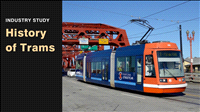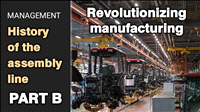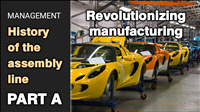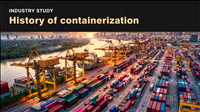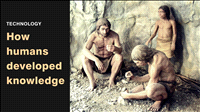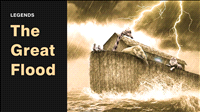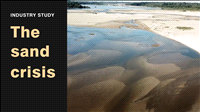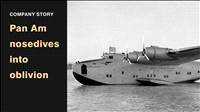History of the retail business part A | Industry Study
By Kiron Kasbekar | 16 Jan 2023
Today’s video is the first leg of a walk through the history of the retail business.
You might think that retail stores were always present through human history. They were not!
In much of history, right until about the 18th century in Europe and America, and quite a bit later in Asia and other continents, there were no retail stores as we know them today. Or very few, in the big cities of the times.
‘No retail stores?’ You might ask. Then how did people get the things they wanted?
Remember, until very recently times in history, a vast majority of the world’s population lived in villages. Villagers just went to the right artisans or producers in their village and bought what they needed.
You needed a pair of shoes? You went to the cobbler; and he made them for you. You needed a blouse or a shirt? You visited the local seamstress or tailor. You wanted a pot? There was the potter two streets away.
The carpenter would make toys for your children, and the blacksmith metal instruments, and the cutler would sell you knives and spoons. Another metalsmith, called the coppersmith, would make and sell copper and brass vessels.
Two other metal workers, the goldsmith and silversmith, made jewelry and icons of gold and silver.
And let’s not forget the grocer, and the green grocer, and the milkman … and other such vendors. And they all had their little shops where you could go and buy the things you needed. Often the shops were just extensions of their homes.
People believed they had all the shopping conveniences that they’d ever need! I mean, what in heaven could anyone want after they got their pots and pans, and cutlery, and clothes and shoes, and toys for the children, and, of course, the grains and spices and milk and vegetables and fruits? And, yes, even sweets to relish on a special occasion?
Before that, for a substantial part of history there were not enough surpluses for any significant amounts of farm produce or artisans’ products to be brought to a marketplace beyond the village.
Most people lived in villages, and there were very few towns with any major market activity. The villages tended to be self-sufficient, by and large.
In the villages, people traded with one another mainly through barter and with some very limited amount of money.
As we all know, money itself has evolved greatly over the centuries. The issue of coinage, when it did come around 650 BC in Lydia, in present-day Turkey, would have had very limited circulation, and even when the use of coins spread, it took many centuries for it to spread to other regions.
In India, there is evidence of the first coins minted by the Maurya Empire, which endured from 322 BCE to 184 BCE. An empire as big as the Maurya Empire, which built enduring institutions and practices where it expanded, needed to have a method by which to transact business.
Where they did come into use, coins would still have been used in very limited areas and for limited purposes. The use of barter prevailed even after the introduction of coins.
So it was something like this: you give me a length of cloth, and I will give you ten bushels of grain. Or you give me a bunch of vegetables and I will give you a jug-full of milk.
A potter would supply some pots to a farmer, and the farmer would give the potter some grains or vegetables in exchange. A weaver would make the exchange with some lengths of cloth, and a wheelwright, usually the village carpenter, would make a cartwheel or a full cart or a plough, and trade them for grains and other stuff he needed.
Once in a while, usually on some festive occasion, there would be a fair in a big village or small town nearby, and people from all around would land up there with their wares and exchange them with stuff they wanted.
In situations like this it was not so easy to make barter trades in all transactions, so money began to be used in such events. But all this was still very limited.
It was only when agriculture began to generate greater yields that bigger towns could be sustained – and that is when trade began to grow more rapidly.
Without improvements in agricultural productivity, towns and cities would not have been sustainable. In the ancient past, cities could come up and survive only where there was fertile land and water, which together yielded substantial amounts of surplus grain. Towns would also crop up on important trade routes where caravans would pass and conduct their business and rest for the night before they continued their journey to their final destinations.
There were some commodities that were in demand around the world, and they formed the lifeline of trade across regions from the earliest times. But I am not going into any detail about them.
I am not going to discuss the long-distance trade routes here, such as the ancient Silk Road that linked China with the Roman Empire. China exported silk to the Roman Empire from the first century BCE, and imported wool and other products from Europe.
India too had a flourishing partly seaborne and partly land-based trade with the Roman Empire.
As towns grew, some artisans migrated there, and their trade grew with the towns. Merchants would buy grains and other agricultural produce from farmers and sell it in the towns. Cloth merchants set up shop, and so did carpenters, cobblers, blacksmiths, and other tradesmen.
This was how trade and industry gradually grew from its origins in Asia Minor, i.e., in and around Turkey, in ancient times, to many more cities by the Middle Ages.
Nor am I going to talk about the ancient trade in amber from Northern Europe, in salt from Malta, in spices from Africa, in incense from the Arab peninsula, tea from China, and the later trade in gold, slaves, salt, cloth and guns in North Africa.
In this video, we are looking at the retail business as we know it today, and how it has developed in the past century or two. Maybe a little earlier.
Essentially I am looking at how the retail business developed since the industrial revolution, which not only expanded the production of existing products, but also brought new products to the markets. And it also brought new ways in which things were produced, which increased production volumes exponentially.
Most of us know that the Industrial Revolution began in England in the mid- to late 1700s, and then spread to the rest of the world. What this revolution achieved was to substitute simple manual labor with machine-aided labor.
Sounds simple doesn’t it? Get machine, start revolution! No, it wasn’t that simple.
The Industrial Revolution would not have happened without a series of improvements in agriculture in England.
One of the first of these was the Enclosure Movement that began in the early 1700s, when rich farmers began to expand their farms through enclosure of previously common land, or fencing or hedging of large tracts of land for experiments in new farming techniques.
Such enclosures caused great hardship to small peasants, who were suddenly deprived of land on which they could graze their cattle and sheep. There were several revolts against the enclosures, but the government of the day supported the big landlords.
The enclosures enabled the use of such farming techniques as improved crop rotation, and the use of carefully controlled nutrients in the soil.
Farmers also bred better livestock, and, with the urge to improve productivity, new machines were invented, such as Jethro Tull’s seed drill, which helped farmers to plant seeds in a way that led to significant improvements in crop yields.
And then came more hardships. And much good too.
As farm sizes grew and better production methods were employed, some economies of scale kicked in, and fewer farmers were needed to work the land. The surplus people moved to cities in search of work.
Thus improvements in agriculture resulted in a large labor force becoming available for industry, and also the capability to feed bigger city populations.
It is estimated that total agricultural output in England expanded 2.7-fold between 1700 and 1870 and output agricultural worker grew at a similar pace. Britain came to have the most productive agriculture in Europe, with yields that were as much as 80 per cent higher than the average in Continental Europe.
We won’t go into this subject any further in this video (we will do that in another video). The purpose to talk about the farm surpluses was to establish how cities grew, and with the growth of cities came the expansion of manufacturing, and with that the rapid growth of the retail industry.








